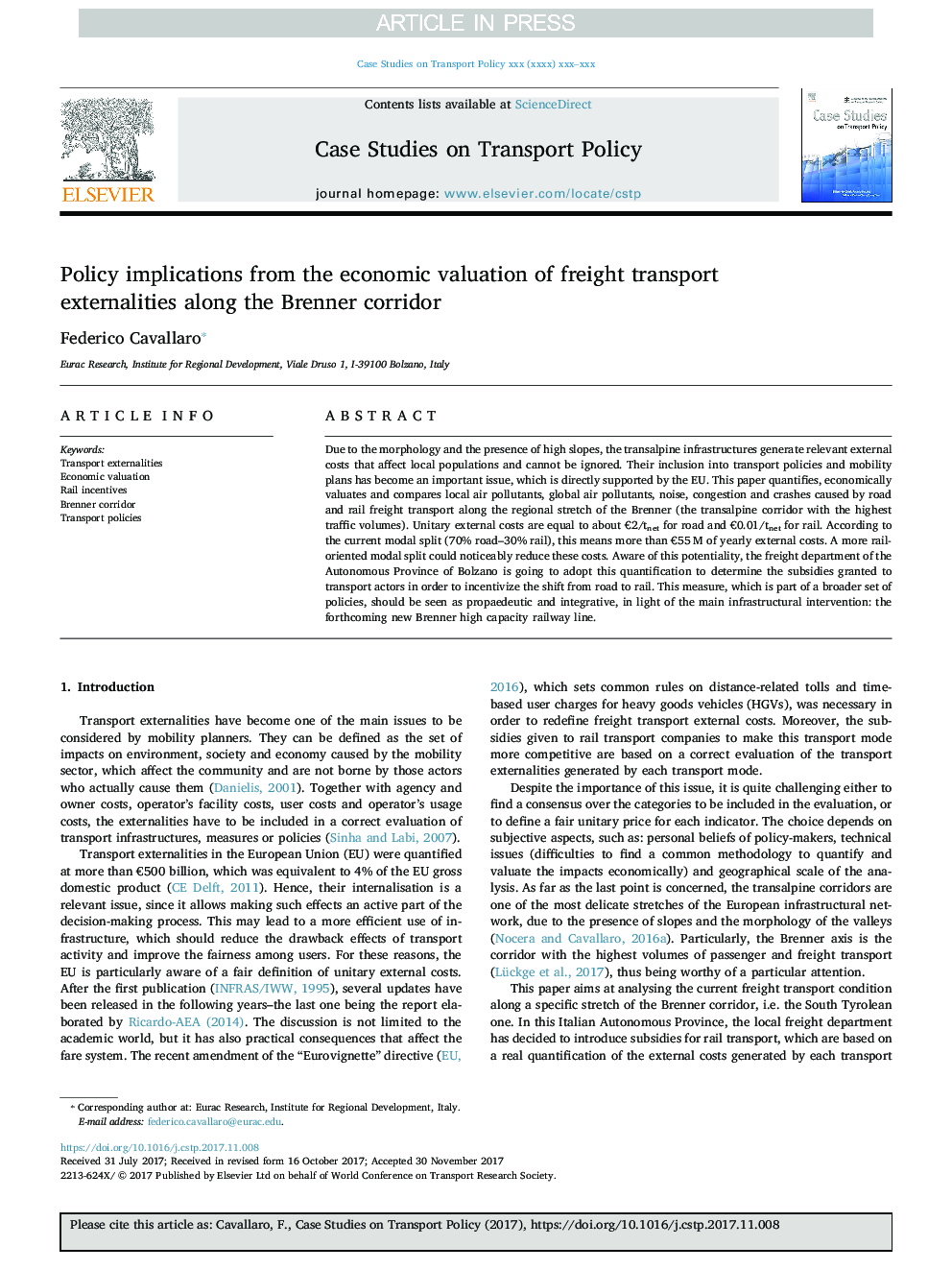| Article ID | Journal | Published Year | Pages | File Type |
|---|---|---|---|---|
| 6702246 | Case Studies on Transport Policy | 2018 | 14 Pages |
Abstract
Due to the morphology and the presence of high slopes, the transalpine infrastructures generate relevant external costs that affect local populations and cannot be ignored. Their inclusion into transport policies and mobility plans has become an important issue, which is directly supported by the EU. This paper quantifies, economically valuates and compares local air pollutants, global air pollutants, noise, congestion and crashes caused by road and rail freight transport along the regional stretch of the Brenner (the transalpine corridor with the highest traffic volumes). Unitary external costs are equal to about â¬2/tnet for road and â¬0.01/tnet for rail. According to the current modal split (70% road-30% rail), this means more than â¬55 M of yearly external costs. A more rail-oriented modal split could noticeably reduce these costs. Aware of this potentiality, the freight department of the Autonomous Province of Bolzano is going to adopt this quantification to determine the subsidies granted to transport actors in order to incentivize the shift from road to rail. This measure, which is part of a broader set of policies, should be seen as propaedeutic and integrative, in light of the main infrastructural intervention: the forthcoming new Brenner high capacity railway line.
Related Topics
Physical Sciences and Engineering
Engineering
Civil and Structural Engineering
Authors
Federico Cavallaro,
